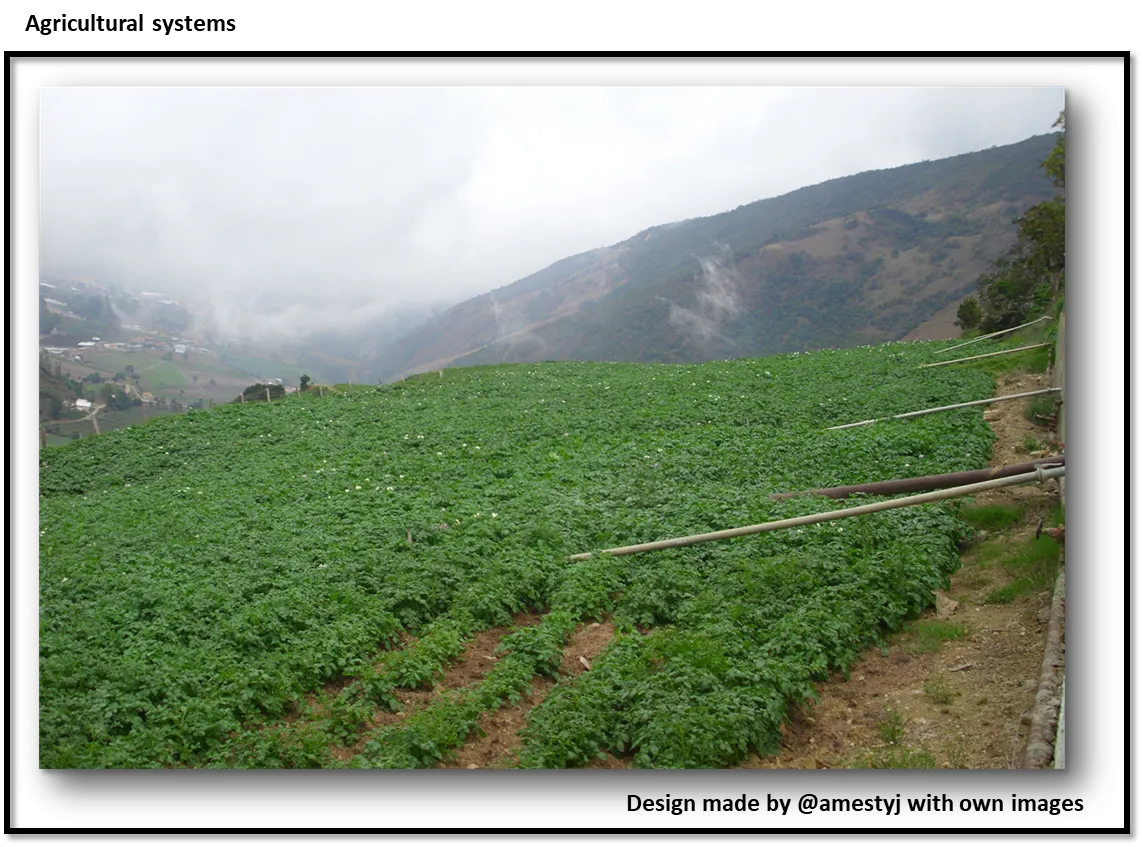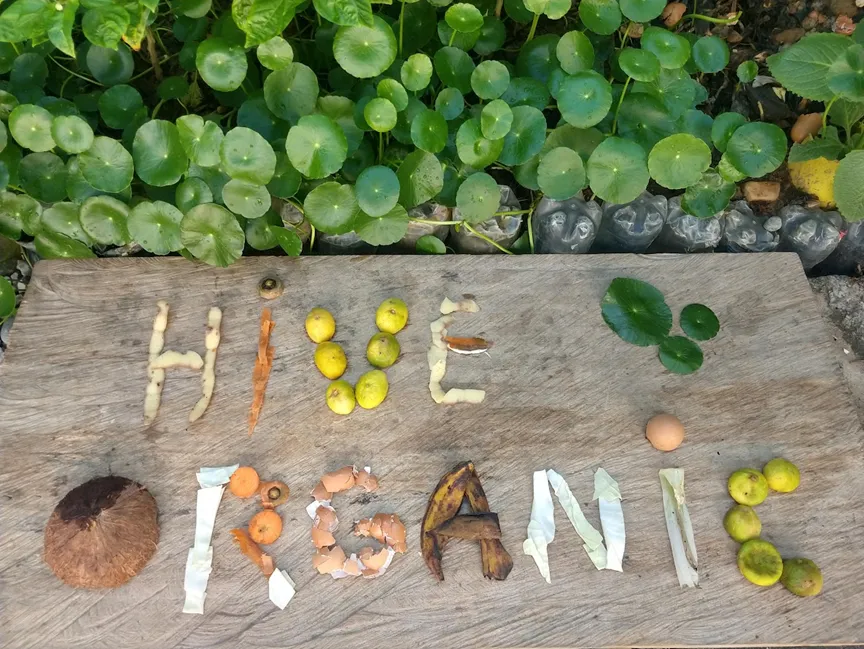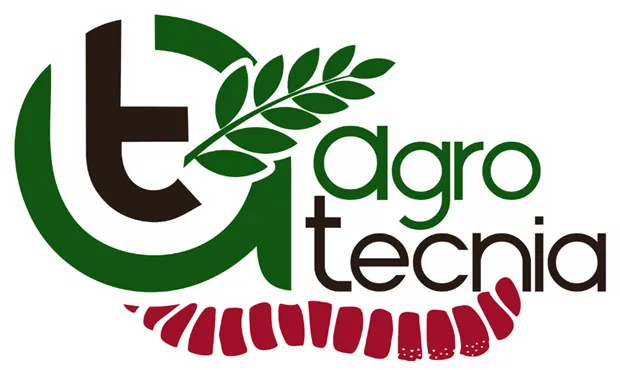Dear readers, in Moderna agriculture the management based on the ecological principles of each ecosystem has been left aside and has been characterized by progressively depending on external inputs such as insecticides, herbicides, synthetic fertilizers, among others, which is unsustainable, because they can significantly reduce the functional biodiversity and contaminate certain resources such as water. In this sense, man is responsible for the rational management of resources with the search for appropriate strategies so that all the elements that make it up (plants, animals, soil, water, among others) relate, interact with each other and with their environment.

The fact of not taking into account the relationship between the elements, has generated a rupture in the ecological balance or an alteration of climatic conditions in different regions, which is summarized in a series of natural phenomena that threaten the continuity, availability and use of these components. Among the anthropogenic causes, soil gradation and contamination stand out, caused by excessive use of fertilizers, compaction by trampling and machinery, as mentioned above water pollution by excessive application of products with certain toxicity.
In this same order of ideas, the loss of biodiversity due to habitat destruction, deforestation, establishment of monocultures, makes them susceptible to pests or diseases, since their genetic uniformity allows a rapid spread of pests and pathogens. In the same way, damage to health has been recorded, since the constant manipulation of agrochemicals can develop malformations, and even the intake of food produced under the use of these, can cause some disorders.
Another factor within the agrosystems that has been affected is the feeding of cattle, due to prolonged droughts or rains, poor management and little availability of necessary resources in the soils, such as nutrients, which affect pastures. According to Méndez, (quoted from INDULAC 1988), he points out that “The degradation of pastures begins with the breakdown of the ecological balance caused by the intervention of man through the felling of native vegetation to plant pastures in monocultures”.

However, today it is considered that there is a natural capital, which is necessary to maintain to ensure the sustainability of the economic system in an indeterminate time, that is why agroecology plays an extremely important and essential role for new development models, being agrosystems part of the new practices, which allow redesigning them to diversify and acquire autonomy, sustainability, sustainability, efficiency and credibility.
Therefore, the use of all areas in the most environmentally friendly way is the basis of sustainability and hand in hand with it a balance is sought in the different areas, economic, social and environmental. To achieve this symbiosis, innumerable techniques, alternatives and totally organic strategies have emerged based on the rational use and conservation of natural resources, in order to reduce the negative impacts on the environment, produced by current agriculture, establishing multiple-use agrosystems, which allow the execution of the best current agricultural techniques together with the traditional ones.
At the same time, it is important to know the relationship or the link that exists between the soil, plant and animal within the agrosystems, in this way a better management can be carried out applying the appropriate strategies, since, the biotic and abiotic components that interact in the ecosystem and make possible the entire process that takes place in these (such as the decomposition of organic matter for the availability of nutrients for plants), allowing the producer to maintain the appropriate conditions that do not interfere with biodiversity and its symbiosis, rather, it mimics the natural process and promotes the sustainability of these systems.

| Final considerations |
|---|
n this same order of ideas, the establishment of a multipurpose agrosystem tries to avoid deforestation and instead integrate all the elements present in the environment, diversify and rotate crops, to avoid soil degradation, associate them, for greater use of the area and biological control of pests and diseases, use plants for the preventive control of parasites (flies and ticks), that is, replace chemical compounds with organic, in order to obtain a healthy, certified and guaranteed product, resulting in an optimization of production, in an organic way, reflected in the efficiency of all the subsystems that make it up. For its part, the establishment of different species of forage, fruit, medicinal and forest interest, allows, not only to diversify the system, but to preserve them, in order to have enough genetic material, available and accessible to the public and its continuous propagation, in addition the obtained material can be established in the different paddocks of the production unit to supply some nutritional deficiencies of cattle and offer shade.
In the same way, when designing stratified diagrams, the present plant population can be visualized, as well as the multi-strata, through the height represented by each species, it should be noted that by representing the current and future system in two profiles, the differences in terms of plant diversity, use of area, nutrient recycling, energy flow and interaction between the elements can be appreciated comparatively.
| Bibliographic references |
|---|
- Altieri M. (1999). Agroecology. (Ed. Nordan - Community). Montevideo, Uruguay.
- Altieri, M. (2011). Agroecological designs: a tool for sustainable agricultural planning. Medellin. Colombia: p 5.
- Beech t, G. (1974). Systems theory, the key to holism and reductionism. Bioscience. pp. 579-596.
- Caporal, F. and Costabeber, J. (2004). Agroecology and rural extension. Contributions to sustainable rural development. Brasilia DF: 119 pp.
- Gliessman, S. R. (1998). Agroecology: ecological processes in sustainable agriculture. (CATIE). q.359.
- Guzman et al. (2000). Agroecology: theoretical bases for the design and management of sustainable agroecosystems. Faculty of agricultural and forestry sciences. Editorial de la Universidad de Plata, p 56.
- Indulac, (1988). Venezuelan Rural Guide. (22nd ed.). Caracas, Venezuela.



From agrotecnia we reiterate our gratitude to our followers and all the communities that value our agricultural content, this commits us to continue sharing quality information with the whole hive.


